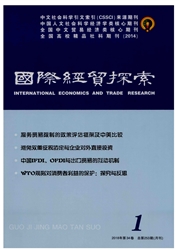

 中文摘要:
中文摘要:
学界从不同角度反思了欧洲债务危机的成因,但欧元区成立与制度设计、全球金融危机的外生冲击,更多只能表现为外因和导火索。文章基于新的视角,理论分析了产业空心化通过实体经济停滞、劳动力市场扭曲、对外依存度恶化、资产价格膨胀四条路径引致欧洲债务危机的爆发。对各条作用路径进行的实证检验表明,欧债国家各自传导路径虽有所侧重,但产业空心化才是债务危机的根源;欧债国家产业空心化带来了实体经济停滞、房地产过度投资、失业剧增等一系列结构扭曲;脆弱的实体经济在外部冲击之下陷入了债务泥潭。吸取欧债危机教训,中国应更注重实体产业竞争力的构建,防范产业空心化的出现,实现产业兴邦。
 英文摘要:
英文摘要:
The academics have been rethinking the causes of the European Debt Crisis. However, the establishment and system design of euro zone and the exogenous shock of global financial crisis are just external reasons and fuses. This paper finds a new way and theoretically analyzes how the industrial hollowing leads to the outbreak of the European Debt Crisis through four paths, which are entity economic stagnation, labor market distortions, deteriorating external dependency and asset price inflation. The results of empirical tests show that although the PIIGS have a different emphasis on transmission route, the hollowing out of industry is the root of the debt crisis. The industrial hollowing leads to the entity economic stagnation, excessive investment in real estate, a surge in unemployment and a series of structural distortion. Under the external shocks, the fragile substantial economy gets into troubles and eventually shows in the form of a debt crisis. We should draw lessons from the European Debt Crisis and pay more attention to the construction of substantial industry competitiveness to prevent the emergence of industrial hollowing and realize industry development.
 同期刊论文项目
同期刊论文项目
 同项目期刊论文
同项目期刊论文
 期刊信息
期刊信息
